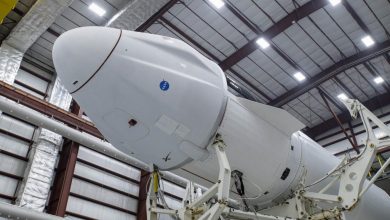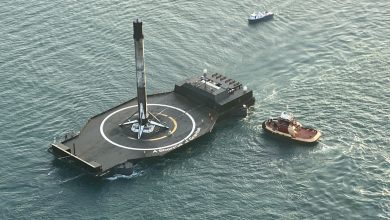
Back on Wednesday 12th May, Elon Musk all of a sudden, decided to stop using Bitcoin. The main reason was stated in a Twitter post. Musk cited the environmental impact of Bitcoin mining, which has been cited by critics for being energy intensive and a detriment to the climate.
The move took cryptocurrency enthusiasts by surprise, and drove down the price of Bitcoin after hours, with the volatile digital currency shedding over 13%. Other major crypto units followed suit, as investors moved to discount how the loss of a prominent backer’s support would impact the asset class’s development.
Musk said in his post that Tesla was “concerned about rapidly increasing use of fossil fuels for Bitcoin mining and transactions, especially coal, which has the worst emissions of any fuel.”
“Cryptocurrency is a good idea on many levels and we believe it has a promising future, but this cannot come at a great cost to the environment,” Musk wrote.
The development came as a shock to Tesla observers, given that the car company only recently disclosed it had put $1.5 billion worth of Bitcoin on its books, and would begin accepting it for payment. That purchase, disclosed in a regulatory filing in February, has already yielded a “positive impact” of at least $100 million for Tesla, the company said last month.
The move also sparked an immediate furor among Bitcoin investors — many of whom have applauded Musk’s embrace of Dogecoin (DOGE). The latter plummeted by 20% after hours, alongside Litecoin (LITE) and Ethereum (ETH), both of which also dived after Musk’s announcement.
In recent weeks, the meme currency has skyrocketed as the billionaire publicly championed its rise — which came back to earth over the weekend after Musk’s controversial appearance on “Saturday Night Live,” when he referred to the unit as a “hustle.”
Still, major investors have been slowly warmed to the crypto sector as its profile has risen in markets. Although legendary investors like Warren Buffett and Charlie Munger are still not fans, major investment banks have begun dipping their toes into cryptocurrency as an investment option.
DOGE-1 Mission to the moon
SpaceX books a mission to the moon funded entirely by Dogecoin just days after SpaceX founder Elon Musk joked on Saturday Night Live about his role in spreading memes about the cryptocurrency.
Geometric Energy Corp. has planned a rideshare mission to the moon aboard a SpaceX Falcon 9 rocket, which usually costs about $62 million to book, or about 129 million Dogecoin (at the cryptocurrency’s $0.48 value as of 2:30 p.m. on Monday (May 10)). How much money or crypto will actually change hands, however, has not yet been revealed, nor has information about what other missions will fly on the rocket.
Musk tweeted about the deal on Sunday, saying this is the first time that cryptocurrency will be used in space, and that it will also be the first meme used in space. “To the mooooonnn!!” he added. (We couldn’t immediately verify his claims about being the first (with either crypto or memes), but it is important to note that the cryptocurrency Blockstream has a satellite network that broadcasts the Bitcoin blockchain as a backup for ground network interruptions.)
he mission, which is set to launch in the first quarter of 2022, follows an announcement Musk made April 1 promising to put Dogecoin “on the literal moon.” Now, since he tweeted about this on April Fool’s Day, not everyone took it seriously at first.
But the mission continues to solidify, and currently it is designed to be orbital. With the mission, SpaceX aims to send an 88-pound (40-kilogram) CubeSat (appropriately named Doge-1) on a mission to gain “lunar-spatial intelligence … with integrated communications and computational systems,” according to a Geometric press release. The payload will also include sensors and cameras, the details of which are not yet public.
Geometric CEO Samuel Reid further stated in the release that the deal “solidified DOGE as a unit of account for lunar business in the space sector.” The company also pledged to transact all future missions in Dogecoin, touting benefits such as its security and the fact that trades can happen even outside of business hours.
SpaceX launching satellite Doge-1 to the moon next year
– Mission paid for in Doge
– 1st crypto in space
– 1st meme in spaceTo the mooooonnn!!https://t.co/xXfjGZVeUW
— Elon Musk (@elonmusk) May 9, 2021
That said, publications such as Barron’s see some potential risks, and point to mitigating valuation factors in cryptocurrencies and their volatility. There have also been some industry reports musing about the stability of cryptocurrency infrastructure, and its role in funding illegal activities.
Cryptocurrencies like Dogecoin, according to Investopedia, are digital or virtual currencies secured using cryptography. Many of these currencies are based on blockchain technology that distributes a ledger or record of the currency across a computer network, independent of government regulation. At least two forms of cryptocurrency, Dogecoin and Etherum, have hit all-time highs in recent weeks, according to media reports.
Dogecoin was launched in 2013 as a joke by two software engineers, Billy Markus (from IBM) and Jackson Palmer (from Adobe), according to Business Insider. They put together two big discussion topics of the day — Bitcoin and a widely memed Shiba Inu dog meme nicknamed “doge” — to create Dogecoin. When released, Dogecoin became popular quickly, in part, because it is easier to use than Bitcoin, Business Insider added.





